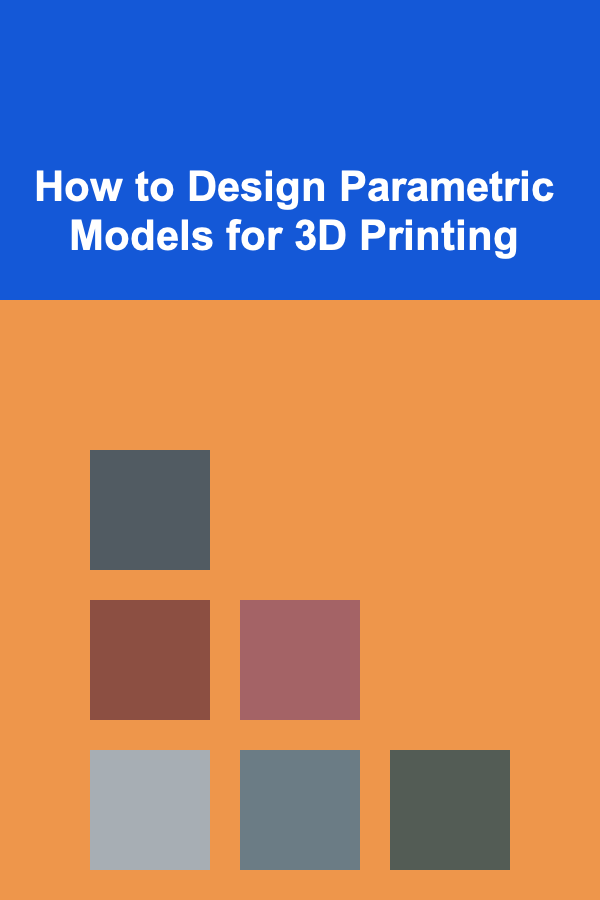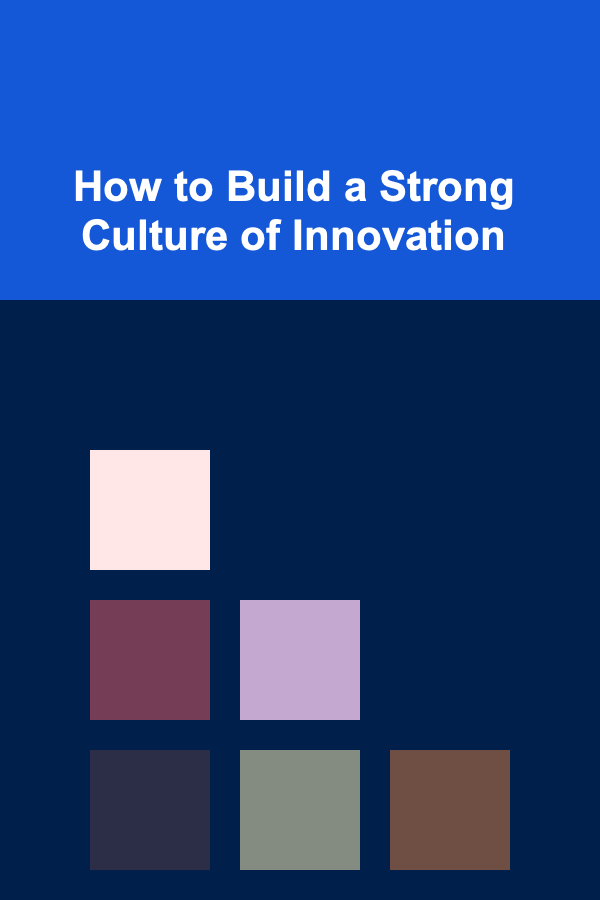
10 Tips for Designing Your Own Knitting Project Planner
ebook include PDF & Audio bundle (Micro Guide)
$12.99$11.99
Limited Time Offer! Order within the next:
Not available at this time

Knitting is a creative and therapeutic activity enjoyed by many people around the world. Whether you are a seasoned knitter or just starting, keeping track of your knitting projects is crucial to ensure they're completed successfully. A knitting project planner can help organize your ideas, materials, deadlines, and progress, keeping your work efficient and enjoyable. Designing your own knitting project planner adds a personal touch that perfectly suits your style and needs.
In this article, we will explore 10 essential tips for designing your own knitting project planner, so you can stay organized, motivated, and creative. These tips will guide you through creating a planner that not only tracks your projects but also enhances your knitting experience.
Start With a Clear Purpose
Before diving into the design process, consider the primary purpose of your knitting project planner. Are you looking for a tool to track progress? Do you want to manage multiple projects at once? Or perhaps you want a space to document patterns, yarns, and notes for future projects? Having a clear purpose will help you define the sections and features that your planner should include.
Key Questions to Ask:
- Do I want to track multiple projects simultaneously?
- Should my planner allow space for pattern notes?
- Is it important to keep track of the yarn, needles, and tools I use?
- Do I need space for reflection or inspiration, such as sketches and design ideas?
Once you've identified your main goal, the design process will become easier, as each section of your planner will serve a specific function.
Include a Project Overview Section
A project overview section is one of the most important components of a knitting project planner. This section allows you to track basic details about each project in one place. For each project, you should record the following key details:
- Project name: Give each project a unique name or title for easy identification.
- Pattern: Include the pattern name, designer, or even a photo of the pattern.
- Start and end dates: Record when you begin and finish the project, which helps track progress and timeline.
- Project type: Specify whether the project is a sweater, scarf, shawl, socks, or any other type.
- Difficulty level: Mark the difficulty level, from beginner to advanced, to keep track of your knitting skill development.
This section can also include a check-off list for important steps, such as casting on, completing the body, and binding off, so you can see your project milestones at a glance.
Design a Yarn Tracker
Yarn is an essential part of any knitting project, and keeping track of the yarn used is crucial for ensuring you have enough to complete the project and plan future projects accordingly. A dedicated yarn tracker section will help you document the type, amount, and source of the yarn used for each project.
Here's what your yarn tracker should include:
- Yarn brand: Record the brand name and yarn type.
- Yarn weight: Note whether the yarn is fingering, worsted, bulky, etc.
- Fiber content: Keep track of the fibers used (wool, cotton, alpaca, etc.).
- Colorway: Include the color name or code.
- Quantity used: Write down how many skeins or yards of yarn were used.
- Dye lot: Make a note of the dye lot to avoid mismatched colors if you need more yarn later.
- Notes: Include any special care instructions or other information about the yarn.
Tracking your yarn usage not only helps you avoid running out but also lets you reflect on which yarns you prefer working with for different types of projects.
Create a Needle and Tool Tracker
Another essential aspect of knitting is keeping track of the tools and needles you use for each project. This section of your planner will ensure you don't forget what needle size or type you used, which can be helpful when revisiting a project after some time.
Include the following information:
- Needle size: Record the size and type of needles (e.g., US 8 circular needles).
- Needle material: Note whether you used bamboo, metal, or plastic needles, as different materials can affect your knitting experience.
- Additional tools: Record other tools you used, such as stitch markers, cable needles, row counters, and knitting bags.
This section can also help you organize your tools by reminding you what's needed for your next project or even what's missing from your collection.
Design a Progress Tracker
Tracking the progress of your knitting project is essential for staying motivated and on track. A progress tracker can be as simple or as detailed as you like, depending on how much information you want to document. Some ideas for your progress tracker include:
- Date completed sections: For each major milestone in your project (such as finishing a section, completing the body, or binding off), add a box to check off and record the date.
- Percentage of project completed: Some knitters like to track the percentage of their project done (e.g., 25%, 50%, 75%, etc.). This can provide a visual sense of accomplishment as you move through the stages of the project.
- Notes on challenges or accomplishments: If you encounter any challenges, like difficult stitches or techniques, or if you experience an "aha" moment, jot it down here.
Progress tracking not only helps you stay on top of your projects but also serves as a way to reflect on the experience, such as how long a project took or what challenges arose.
Include a Swatch Section
Swatching is a vital part of knitting to ensure your project will turn out the correct size and fit. A swatch section allows you to record information about the gauge, yarn, and needle combinations you tested before starting your project.
Here's what to include in your swatch section:
- Gauge: Record the number of stitches and rows per inch for your swatch.
- Needle size: Write down the needle size used when knitting your swatch.
- Yarn used: Document the yarn and color used in the swatch.
- Notes: Include any adjustments or observations you made while knitting the swatch, such as how the yarn behaves after washing or blocking.
This section will help you avoid issues with gauge later in the project and allow you to track what worked and what didn't for future reference.
Design Space for Notes and Sketches
A knitting project planner isn't just about recording technical information---it's also a creative space where you can jot down your ideas, make design sketches, and track inspirations. Add a notes and sketches section where you can freely express your thoughts and ideas about each project.
Here's what you might include:
- Design ideas: If you're making modifications to a pattern or designing your own, this is the place to sketch out your ideas or make notes about any changes.
- Inspiration board: Include swatches of colors, textures, and patterns that inspire you.
- Techniques to try: Write down any new techniques you'd like to experiment with, such as cables, lace, or brioche knitting.
Having a space for creativity in your planner can help you stay inspired and think outside the box while knitting.
Plan for Blocking and Finishing
Blocking is an essential part of finishing a knitted item. It helps even out stitches, improve the shape, and bring out the beauty of your finished piece. A section dedicated to blocking and finishing will help you remember the necessary steps to take care of your projects once they're completed.
This section should include:
- Blocking instructions: Write down any specific blocking techniques or methods you want to use (wet blocking, steam blocking, etc.).
- Finishing touches: Record the steps involved in finishing your project, such as seaming, weaving in ends, or adding embellishments (e.g., buttons, beads, or fringes).
- Care instructions: If you're gifting the project or storing it for later, make a note of care instructions such as hand washing or machine washing.
By adding a blocking and finishing section, you can ensure that each project is completed properly, looking polished and professional.
Set Project Deadlines
Some knitters work on projects for personal enjoyment, while others have deadlines, such as gifts for holidays, birthdays, or events. If you have projects with specific deadlines, it's helpful to set timelines and keep track of milestones in your planner.
Here's how you can incorporate deadlines:
- End date: Record the final date by which you want to complete the project.
- Milestones: Break down the project into smaller milestones, such as completing the body, finishing the sleeves, or knitting the collar. Assign a target date for each milestone.
- Priority level: Mark some projects as high priority if they need to be completed sooner (for example, a gift for an upcoming birthday).
Setting deadlines can help you stay focused, avoid procrastination, and finish your projects on time.
Personalize Your Planner
The most enjoyable part of designing your knitting project planner is personalizing it to suit your style. Whether you prefer a digital or a paper planner, make it your own by incorporating elements that reflect your personality.
Here are a few ideas:
- Color scheme: Choose colors that inspire you and align with your aesthetic preferences.
- Stickers and illustrations: Add decorative elements such as knitting-themed stickers or drawings to make your planner visually appealing.
- Customized sections: Tailor your planner to fit your specific needs. If there's a section that you find unnecessary, leave it out or replace it with something that resonates more with your style.
A personalized planner can turn organizing your knitting projects into a creative and enjoyable experience in itself.
Conclusion
Designing your own knitting project planner is a rewarding process that will help you stay organized, inspired, and productive. By following these 10 tips, you can create a planner that perfectly suits your needs, from tracking yarn and needles to setting deadlines and reflecting on your projects. With a customized planner in hand, you'll be better equipped to tackle your knitting projects with confidence, creativity, and a sense of accomplishment. Happy knitting!

How to Organize Your Fishing Tackle Box for Easy Access
Read More
How to Explore GameFi and the Future of Gaming
Read More
How to Discover Novels That Feature Strong Family Bonds
Read More
How to Design Parametric Models for 3D Printing
Read More
How to Build a Strong Culture of Innovation
Read More10 Tips for Preventing Errors in Your Client Invoicing Tracker
Read MoreOther Products

How to Organize Your Fishing Tackle Box for Easy Access
Read More
How to Explore GameFi and the Future of Gaming
Read More
How to Discover Novels That Feature Strong Family Bonds
Read More
How to Design Parametric Models for 3D Printing
Read More